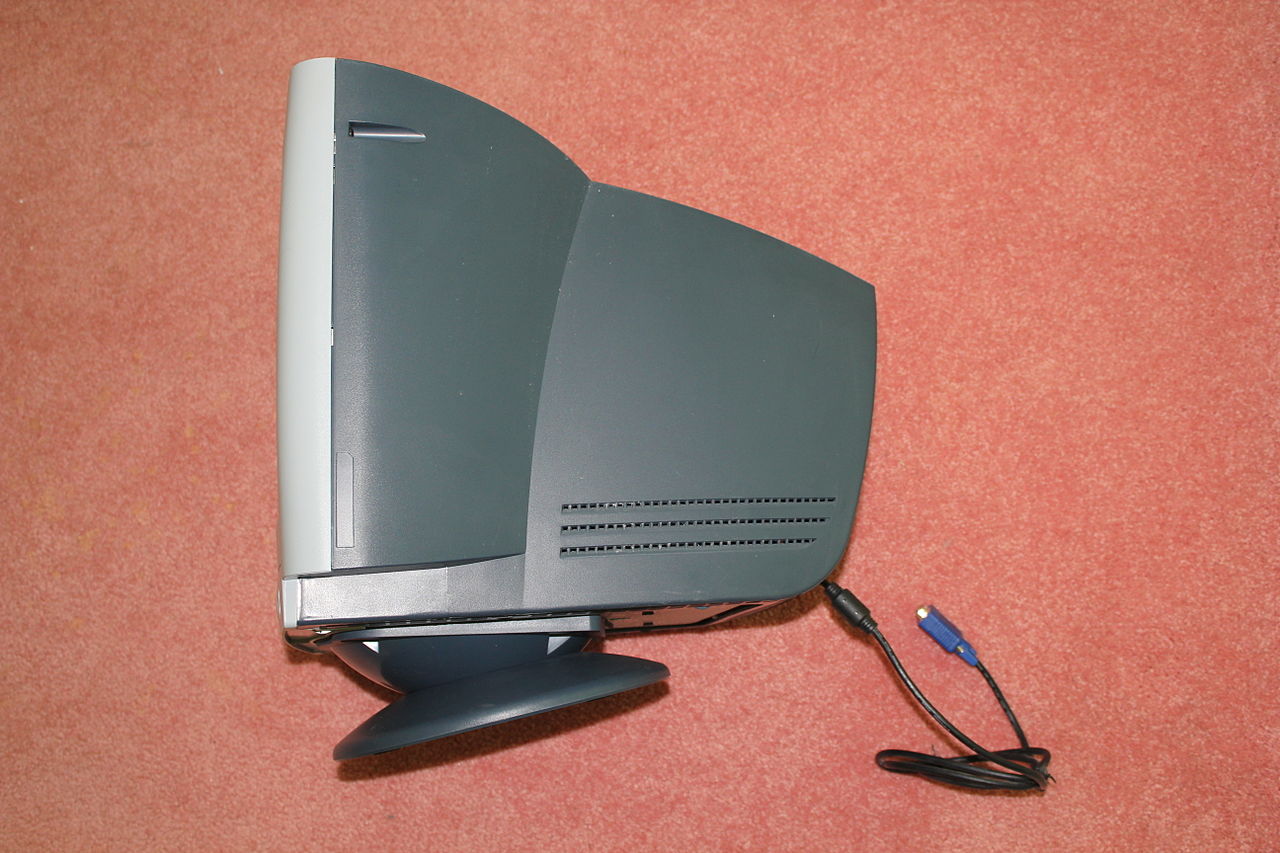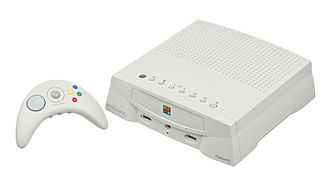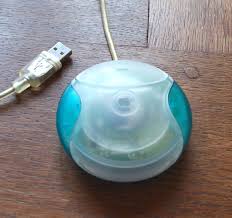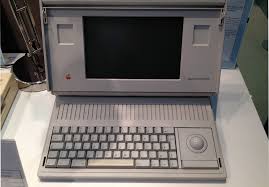Do You Remember These 13 Obsolete 90s Tech Items?

It seems like just yesterday that it was the turn of the decade and you couldn't go five minutes without hearing someone loudly proclaiming, "It's the 90s!", a phrase which gradually became more annoying every time it was uttered. Now we're halfway through 2017. 1990 is now 27 years in the past and all except for the very latest born 90s babies are now adults. It was the decade in which the internet was brought to near total awareness and accessibility to the American public.
We felt like we were living in an era of cutting-edge, knock-your-socks-off technological innovation. Technology that was already used and technology that was popping up both in the office and at home seemed as though it could never be outdone. These days, almost all of it has. Some of these once-wowing gadgets slowly became obsolete over time, while others crashed and burned within months. We hope you like the classic 90s era episodes of The Simpsons, as we'll be referencing them a lot - what other vehicle is there that better captured and skewered 90s pop culture?
Without further ado, we'll take a walk down memory lane and revisit some of the hallmarks of technology in the 90s.
1. MS-DOS
We'll start with DOS. Prior to Windows 95, if you wanted to do anything on a PC, you had to go through DOS first. MS-DOS was an acronym for Microsoft Disk Operating System. It was a plain text command line operating system that featured no images or colors. It's hard to imagine that with today's need for constant stimulation and decimated attention spans that anyone would be able to tolerate DOS now. In the 1980s and early-to-mid 90s the PC market was booming. 386, 486, and IBM-Compatible were all words you'd hear on a daily basis. None of these were specific computers, but rather different types of computers manufactured under a menagerie of different brand names. The 386 and 486 got their names from Intel's 80386 and 80486 XS processors, respectively. As IBM was one of the biggest names in computing back then, IBM compatible was the name given to computers that, predictably enough, could run IBM software. Whichever one of these you were using, DOS was the bedrock of all operations. Who doesn't remember having to type in the old C:\>Win command upon starting their computer to access Windows?
Windows, at the time, was actually a DOS program and not an operating system in and of itself. This would remain the case until Windows 95 came out, though DOS was still running and usable in the background in every version of Windows until XP. When you were done with Windows, you had to exit back to DOS before you could shut your computer down. You pretty much had to go to the DOS command prompt to do anything. If you wanted to install software, you'd have to put in the floppy disk and enter install commands within the DOS Prompt. Before you could do that, you'd have to access the floppy disk drive. To get to the true floppy disk drive, you would have to enter in C:\> Dir A. Then your commands would switch to A:\> for whatever you planned to do next. If you wanted to use the hard disc drive (these disks eventually became known as floppy disks, but we'll get into that a bit later), it would be the same affair, only with B as the directory and corresponding command prompt initiator. Whether you were an adult using Quicken, Lotus, or maybe XTree Gold at the office or a kid wanting to play Oregon Trail or Where in the World is Carmen San Diego, typing out commands in the black and white world of DOS was an unquestioned part of your daily existence.
As tedious and inefficient as DOS may have been (compared to the systems we enjoy now), it actually had a pretty long shelf life, running from 1981-2000. We weren't complaining though. In the early 90s, we weren't complaining. We felt like we were living in the future and were at the pinnacle of technological enlightenment. DOS will always have a certain classic charm to it. Admit it, you miss the days when the following joke would've been understood by everyone:
2. Floppy Disks

As promised earlier, we'll now talk a little about floppy disks. The number of people under the age of 25 who are familiar with floppy disks is rapidly dwindling, and even those who are familiar with them likely don't remember true floppy disks. What they remember are 3.5" floppy disks that were originally called "hard disks". We called them hard disks because they had a rigid plastic outer shell. They also featured a sliding metal cover to protect the actual disk lying inside from dust and dirt. Before hard disks, floppy disks really were floppy. They featured 5¼ diameter discs encased in wobbly plastic rectangles. They were cheaper to produce than hard disks, but ultimately had a shorter shelf life due to their size, inconvenience, and vulnerability.
Whether hard or truly floppy, the actual disks inside functioned in the same way. These disks were made of thin sheets of plastic that were coated in iron oxide.

Due to the coating, when these disks were exposed to magnetic fields, they would instantly become permanently magnetic themselves. The storage functionality did bare some resemblance to the CDs and DVDs of today. Different files on the floppy disks would be broken up into "tracks". A concentric circle design of said tracks allowed the disks to quickly switch between them on command. It worked well enough, but the degree of storage was limited. A spindle motor inside of the floppy disk drive would extend into the hole in the middle of the disk shell to spin the disk at an average speed of 360 revolutions per minute. Even the most advanced hard disks of the late 90s could typically hold a maximum of 1.44 MB of data, and that's not much. In fact, it would take 711 of these disks to have a storage capacity of 1 GB. An typical laptop today has about 8 GB of memory. You'd need 5688 (hard) floppy disks to equal that. Though they are rarely seen in offices these days, there are some industries that still rely on the 3½ floppy disks. They're usually required to perform very specific jobs within narrow niche industries for tasks where machines either can't use hard drives or just the task itself can't be accomplished using one. Outside of these areas, large file sharing, internet activities, and everyone's new-found love of photography have pretty much signed the death warrant for floppy disks. If you aren't old enough to remember floppy disks (or even if you are, but are just curious about their operation), here's a quick video that shows how floppy disks worked.
3. Instant Messengers - Especially AIM
Before mobile internet came along and texting and tweeting became our society's preferred mode of communication, people who weren't together would sit at their computers and use instant messaging programs. They were a great alternative for anyone who didn't enjoy talking on the phone or wanted to have a private conversation on which nobody in the surrounding area could eavesdrop. They could still stare over your shoulder to try to horn in, but that was generally easy to catch. While MSN messenger and Yahoo messenger had their users and following, what do you think of when you hear the expression "instant messenger"? We bet it's the little orange running man in the icon below.
![]()
Deep down, we all miss clicking that little orange guy
America Online Instant Messenger (AIM) was the form that had the overwhelming market share. Unlike the texting of today, AIM allowed for an actual fluent conversation. It also allowed social awkward 90s teenagers (such as the author of this article) to clumsily ask out girls who they'd never be able to work up the nerve to do so with in person. If you were an AIM user in the late 90s, you undoubtedly will remember the fun of creating your profile, adding in your icon, and setting up sound effects to alert you when the people you most wanted to hear from came online. Crafting a witty away message was that time period's equivalent of nailing the perfect tweet or Facebook status.
Facebook's Messenger App and Google Hangouts are the closest things to AIM that are used in this day and age. They get the job done, but if you ask anyone who remembers IMing with their friends and significant others during their high school, middle school, or college days can quickly tell you it's just not the same. Rekindle your fond memories of AIM by taking a listen to the alert sounds in the video at the end of this paragraph. Do you remember what each one was for?
4. Pagers/Beepers

As long as we're on the subject of communication, who else remembers the pager/beeper craze of the 90s? Before everyone had cell phones, pagers were the choice when it came to communication on the go. There were several different versions of pagers and each had a different range of capabilities. Some models would do little more than beep (hence the term "beeper") to notify you when somebody wanted you to give them a call. This number would appear on a small colorless screen, which was the primary area of focus on these handheld communication devices. Others could receive very brief text or phone messages. This was made possible by assigning the pagers specific phone numbers or email addresses. The messages received, whether text or voice, were generally referred to as pages
By the mid-to-late 90s, most high-tech professionals, as well as any teenagers wanting to confirm their social A-list status possessed more advanced pagers that were capable of both sending and receiving messages. It was a simpler version of today's texting, usually just used for very brief messages that would be a prelude to a later phone call or online chat. With the lack of colors, emojis, and hashtags, these items that were so impressive during their heyday would be scoffed at if introduced now. Despite this, pagers are still in existence and maintain an important purpose. Many hospitals use pagers for staff communication, as do first responders such as police officers, firefighters, paramedics, ambulance drivers, and diving teams. Because they rely on high-frequency radio signals, they're actually in some ways superior to smartphones, at least in the efficiency of their communication. There are fewer ways to interrupt their signals and you don't need to be in wireless hot spots to ensure your messages are received. They're also used in remote areas where communication via cell phones is impossible.
5. CRT Monitors
Most all of the screens we use today tend to be flat LCD screens. Most any contemporary office computer monitor surely has this feature as do home computers and television sets. This wasn't the case back in the 90s; that was still the CRT era. CRT stands for cathode ray tube, and from the 1940s up to as recently as around 2005, it wasn't at all rare to spot CRT monitors, especially on television sets and computers. In the 90s, they were pretty much the only monitors you'd see around the office. Did you ever wonder where the television nickname "the tube" came from or how YouTube got its name? Both are a reference to CRTs.

Because of the long and bulky shape of CRTs, devices containing them always bulged out quite a distance in the back. In order to display images, cathode ray tubes had to project on to curved phosphorus coated glass screens, which were sometimes referred to as projection screens. They operated though the use of electron guns, which sound more exciting than they actually are. These guns would produce light by way of streaming beams of electrons toward the screen that would travel through an apparatus known as a shadow mask within an image driver. The CRTs in most monitors had three axes through by the light beams would be deflected via electromagnetic force. Where the light beams were directed would determine whether they'd produce colors originating in red, green, and blue, which are the three visible colors in the electromagnetic spectrum. They could then be manipulated to produce all of the other colors of an image that would be displayed on the screen. Not all monitors were equipped this way, as many in that area featured solely black and green, black and orange, or black and gray color displays.
Besides being bulky, CRT monitors had other downfalls. They could heat up very quickly, and could react in quirky ways when brought into contact with a magnetic force. Anyone who had a computer in their school classroom during the 80s or 90s likely encountered at least one troublesome classmate along the way who would intentionally press a magnet to the monitor, causing it to permanently display a purplish aura in the area that was touched. Additionally, if a CRT monitor was left on for too long, the image being displayed could be permanently be burned into the screen in a ghost-like style. They were also very unpleasant to look at when hit directly by the sun, as significant glare would be produced. As some of our readers will surely remember, scanning lines were also an issue, and this resulted in the appearance of a wide bar repeatedly running its way up the screen.
The flat screened LCD monitors we use today are much lighter, easier to store and transport, and aren't anywhere near as prone to overheating. Glare, magnet issues, slow refresh times have are also problems that have largely been eliminated. While we might miss some of the office items we used back in the 90s, few people would disagree that we're better off in the post-CRT era.
6. Dial-Up Internet Connections
Dial-up internet... there's a phrase that brings back some frustrating memories. It was so slow and cumbersome that many of us when frustrated with our internet connections today will utter the line, "I might as well be on dial-up." It was slow, it was loud, and it was annoying. Still, there was no more quintessentially 90s tech experience than listening to your modem connect and waiting for your internet access to begin. Do these sounds ring a bell of nostalgia?
When on a dial-up connection, your computer generally had to be hard-wired to a modem or at the very least, an ethernet cable was a part of the picture. A typical dial-up connection provided a speed of around 56 kb/s, but could run as slowly as 20 kb/s if there was enough noise going on to interfere with the telephone signal. In comparison, a typical cable connection in 2017 will run at an approximate speed of 20 mb/s, which is over 1000 times the speed of some dial-up connections. In order to access the internet, your computer had to be connected to a telephone line, and this line would dial out to an ISP provider in conjunction with the modem. Back when dial-up was the only option, you couldn't receive phone calls unless you had multiple lines. With the declining use of landlines, this wouldn't be as much of an issue now as it was back then. Then again, wasn't it fun waiting 45 minutes to download a 3 minute video clip?
While dial-up internet has several drawbacks, it may never go away entirely. It is still the primary connection method used in developing nations. It is also still employed here in the states in areas where DSL or cable connections are impossible to establish. This is true in many remote rural areas, as well as in extremely rugged and mountainous terrain.
7. Before Google - Old Search Engines
Believe it or not, Google wasn't always King of the Internet. At one time, there were far more competitors in the ring than just Bing and Yahoo.

In the 90s, we also had Lycos, HotBot, Excite, WebCrawler, InfoSeek, Dogpile, AlltheWeb, Alta Vista, Ask Jeeves, Search Me, DuckDuckGo, and several others in the mix. Some bit the dust and faded forever into obscurity, while others re-formatted and are still around today in a different line of business. We'll briefly touch upon a few of the more prominent ones.
AlltheWeb - Though AlltheWeb came out during late end of the 90s, they had the potential to be what Google is now, had their marketing been better. For its time, it was a highly innovative search engine. It was among the first search engines to offer differentiated website, audio, video, image, and news searches. It was also the first engine to offer a boolean search application Its image search would go directly to an image when clicked upon, unlike Google, where users get just a slightly larger version of the thumbnail and are then asked if they want to view the image or go to the site. AlltheWeb also allowed users to completely customize the look of the search engine on their computers. It was more fun and a lot more enjoyable than being forced to repeatedly look at whatever image Google chooses to decorate its homepage with each day. Sadly, a lack of advertising and a less catchy name led to AlltheWeb falling to Google in 2011. Just think, had we been more aware of this search engine, these days you might hear people say, "Hey, could you AlltheWeb that for me real quick?"
Lycos - Lycos was launched in 1994, a time when the average user was just being introduced to the internet. Who doesn't their remember the "Go get it!" commercials featuring the black lab being sent in search of Claudia Schiffer? Now there's a bit of classic 90s nostalgia. Though it's no longer in the search engine industry, Lycos still has staying power on the internet. Presently, they manage web hosting, email hosting, and various social media entities. Making Lycos even more retro in a 90s way is the fact that they now are the owners and operators of Tripod and Angelfire.
HotBot - Though its semi-memorable name might be what most people recall, HotBot was notable for one other thing; it was the first search engine that allowed users to search within search results. For a brief while, they also offered free web hosting to budding web designers and content creators. By 1998, it was clear this wasn't working out for them and they were bought out by Lycos.
Excite - While Excite enjoyed its day in the sun as one of the most popular search engines on the web, all good things must come to an end and for Excite, they did. Excite was a metasearch engine, which means that it aggregated and sorted through results provided by other search engines. It was eventually required by AskJeeves, which is now known as Ask.com. Under the Excite name, e-mail services, stock quotes, and education services are provided. Searching and applying for online courses and degree programs is one of Excite's current flagship services.
AskJeeves - While Jeeves is now gone and Ask.com has a much smaller presence, this search engine was big enough at one time that there was a Jeeves float in the Macy's Thanksgiving Parade. Everyone's favorite online butler was there to assist you in your question & answer searches. Long before smartphones cornered the market and voice searches became the law of the land, AskJeeves was designed to take searches and return results in a conversational, Q&A format. This worked out for a while, but as people moved more and more heavily toward Google, Jeeves had fewer and fewer clients to serve. He was phased out altogether in 2006, when the company's name turned to Ask.com, but it was clear that the genial if not stereotypical English chap wasn't the problem. Ask.com eventually left the search engine business, but still operates today as a metasearch engine of sorts, offering ancillary services that are good enough to keep the company running. Unfortunately, they're now most famous for their toolbar, which many describe as behaving as malware. Consequently, many of the top Google results you get when typing in "Ask.com" revolve around tips on how to remove said toolbar.
GoodSearch - One other search engine we'd like to tell you about is GoodSearch (opens in a new window). This isn't a 90s search engine, but rather a contemporary one that allows you to support any listed charity by signing up, choosing a charity, and performing search queries. It's a great way of helping great causes, but be forewarned - GoodSearch won't tolerate spammers, and if a user employs this engine in black hat, spammy fashion, their charity can be de-listed.
8. Apple's String of 90s Failures
Though it may be hard for some people to imagine now, there was a time when Apple walked a tightrope over a bridge of obscurity and being a punchline. The following conversation between Homer Simpson and a surly sales clerk from 1996 that says it all:
During this time, Apple came out with several products that performed either so poorly that they were virtually unknown or so disastrously poorly that they became the basis for many a joke. Yes, in the 90s, the Apple was certainly plummeting from the tree, and so it seems only fitting and proper that the first less-than-ripe product to discuss should be the Newton.
Apple Newton
Anyone too young to remember the 90s or too young to understand how popular PDAs were at the time will most likely not remember the Newton. The rest of us may remember it, but few of us owned one. Those of us who did remember it as being one of the most frustrating pieces of technology we ever owned. The Newton first hit the market in 1993. PDAs, an acronym for Personal Digital Assistants, were all the rage. They were the precursor to smartphones when it came to the one-device-for-everything market and for a time, it seemed like they were here to stay and destined to become a staple of everyone's life. Wisely spotting this trend and deciding to get in while the getting was good, Apple began to work on a product of their own to compete in the PDA market. Unwisely, the product they developed was the Newton.
The Newton, much like the Palm Pilot, was created with the idea that PDAs were in fact the future of human existence and sought to corner and dominate that market. Unfortunately for Apple, the Palm Pilot did so much more effectively and efficiently, and if it were not for the emergence of smartphones, we'd likely all be using one today. There were so many stale brown spots in this particular Apple item that it failed miserably and is arguably the biggest laughingstock in the company's history. While the Newton actually did have some pretty handy features, they were overlooked because its calling card was its written text-to-digital text stylus. The idea was that rather than having to zip around through different applications, a user could simply write down whatever was on their mind on their Newton and it would be saved for future reference. This wasn't a terrible idea, but it was a terrible stylus. It often failed to read what a user wrote. When it did convert a user's writing into digital text, the message displayed was often very different from the one that entered. Here's one last Simpsons clip that sums it up quite well.
To be fair, Apple eventually did correct all of the problems with the Newton stylus/recognition system and it actually ended up as a product that wasn't too shabby at all. The only problem is that people had formed such a negative view of the Newton from their previous experience with it that sales never recovered and the device was soon discontinued.
Apple Pippin
Hey gamers, do you remember the Apple Pippin? Probably not. If you do, you either have an exceptional memory, were an avid collector of all systems, or probably worked for Apple/had a friend or family member who did. The Pippin was a video game system introduced by Apple in 1996. It had a strange sort of licensing triangle in existence where it was also being licensed and sold by two other companies at the time. Bondai sold two variations of the console, calling one @WORLD and the other ATMARK. Katz had a version called the KMP, which was sold in Canada and Europe

The Pippin was designed with the concept of serving as more than just a gaming console. Like the PlayStation models that came along later, the Pippin was designed to be a device that could also be viewed for watching television, DVDs, and accessing the internet. It was also one of the first gaming consoles to exclusively use CDs instead of cartridges, but it just didn't work out. Sega CD and Sega Saturn were already producing CD based games at the time. Anyone who remembers those consoles will know how sad it is that the Pippin was so poor that it was completely crushed by both. The few people who did own Pippins were annoyed by eternal waiting for disks to load, poor image quality, and Internet navigation that was terrible at best. The tri-licensing deal left Apple with its hands tied when it came to both development and marketing. Its initial cost of $600 was also far in excess of what most people would be willing to pay even for the best console. The3DO (opens in a new window), which was released during the same era, was initially priced at $700, and that alone was enough to prevent sales. Considering how good the 3DO user experience actually was, Apple should have taken a lesson from the 3DO story and refrained from gouging customers for a far inferior piece of technology.
In the end, only 42,000 Pippin units were ever sold. 42,000 may sound like a big number, but consider this - the poorly performing Sega Saturn sold 9.26, despite some claiming it to be the worst video game system of all time (opens in a new window). It's actually quite fortunate for Apple that they named this product the Pippin. They wanted to differentiate it from their Macintosh line, hoping to create a name in a totally different market that wouldn't be associated with computers. Between the different name, its obscurity, and the fact that many people don't know that pippin is a term related to apples in the first place, this strategy helped to at least prevent the Pippin from besmirching the good name of Apple's computers. By 1997 it was gone, making it one of the shorted lived consoles of all time. In retrospect, this shouldn't have been so much of a shock. A console whose library consists of 24 games, with the most notable of said games being Mr. Potato Head Saves Veggie Valley (opens in a new window) isn't going to live long and prosper.
Apple "Hockey Puck" USB Mouse

While Apple pushed out tons of Edsels during its run without Steve Jobs, many of their ideas actually were pretty solid in concept, but poor in execution. What came to be known as the "Hockey Puck Mouse" was actually called the USB Mouse and as its name would imply, it was one of the first USB computer mouse to hit the market. Before we get any further, our use of "mouse" as a plural noun was not a typo or lapse in grammar. Mouse is actually an acronym for Manually Operated User Select Equipment, so mouse works as a plural noun just as well as it does a singular.
Now that that's out of the way, we'll talk about the actual mouse. While the USB Mouse was a great idea in terms of how it connected to computers, its design was not very well conceived. The hockey puck comparisons were drawn for a good reason; the item was shaped more or less as a slightly more round version of a hockey puck. The idea behind this design was to create a mouse that would be smaller, more manageable, and fit well in a human hand. As it turned out, only the first part really worked out. The USB Mouse was indeed small, but it didn't fit most people's hands and it was anything but easy to manage. Its movement was awkward and its service unresponsive. This mouse was soon in the proverbial trap, and it was by no means a Have-a-Heart model.
Macintosh Portable
This is another item that gets an A for effort but an F for execution. The Macintosh Portable wasn't exactly a laptop, but it was designed to be one of the first portable computers that could do most everything a typical computer could. In the end, it didn't quite turn out that way. First of all, its monitor, while being a progressive LCD model, could not display colors. It was very hard to read when hit with glare or in a dim environment. A backlighting system was eventually added, but it drained the battery at an alarming rate. The external and internal batteries ran off the same charge, so having two of them was rather pointless. It was actually worse than pointless, because if the external battery ran out or failed, the internal one would as well and you couldn't even start the computer. The lead acid external battery also led to the most hypocritical aspect of the Macintosh Portable. It was so heavy that it caused the overall weight of the computer to be 16lbs (7.26kg), which made it bulky to handle and difficult to transport for smaller users.

Rather than a mouse, this computer came with a built-in trackball. Anyone who lived through the 80s knows that a trackball is a sure sign of doom when it comes to most any technology. I think all we need to say to qualify this statement is the following: Atari 5200 (opens in a new window). We're sorry we had to do that. As one might expect, the trackball's performance was less than stellar and was just one of the many reasons why the Macintosh Portable bit the dust hard. Don't just take our word for it - PC World rated the Macintosh Portable as the 17th worst technology product of all time (opens in a new window).
20th Anniversary Mac

The fact that the 20th Anniversary Mac didn't make it to consumers until 1997 (which was the 21st anniversary of the first Apple Computer) was the least of this computer's troubles. It was designed to be the most futuristic, high-tech computer most of the world had ever seen. Several devices were combined into one, including the computer itself, a radio, S-video input card, television capabilities, and a full Bose sound system, among others. To call this computer hideous would be a compliment. Truth be told, it was ugly enough to clear out a leper colony, as show by the image to the left of this paragraph. As if the computer itself were not aesthetically displeasing enough, the Bose sound unit that came with it looked like the love child of a gumdrop and a nuclear cooling tower.
The 20th Anniversary Mac featured a very oddly placed, fold-out, vertical CD drive. This drive took up a large amount of the front of the computer, and was topped by an LCD monitor. The monitor functioned well, but was oddly sized and positioned in a manner more awkward than a middle schooler's first dance. One of the biggest struggles the 20th Anniversary Mac faced came before it its creation could even be completed. There was a big battle between the higher-ups at Apple as to whom this computer should be marketed. Some stumped for a young market, as the convergence of so many technological devices would make it highly appealing to teens and college students. Others, perhaps with larger dollar signs in their eyes, contented that it should be designed for top-level business executives. The latter group won, and the 20th Anniversary Mac was introduced to the public at a price of $9000. Corporate bigwigs don't get where they are by making poor business decisions, and they knew that laying out nearly ten thousand dollars for such a sprawling beast of a computer wouldn't be worth their while. It was the first Apple computer built by the Jobs/Wozniak duo in over a decade, so one can cut them some slack for their rustiness.
That's all for now for our nostalgic walk down 90s memory lane. Did you ever see or use any of these devices? Do you have a story to share about them? Do you disagree with our scathing reviews? Are there any other products we left out that you would have liked to have seen included in this post? If the answer to any of these questions is yes, tell us about it! Send us a message and get the conversation with 4AllPromos started.
If you'd like to take another walk down memory lane, check out our articles about the oldest corporate logos that are still in use as well as our piece on retro promotional products.








